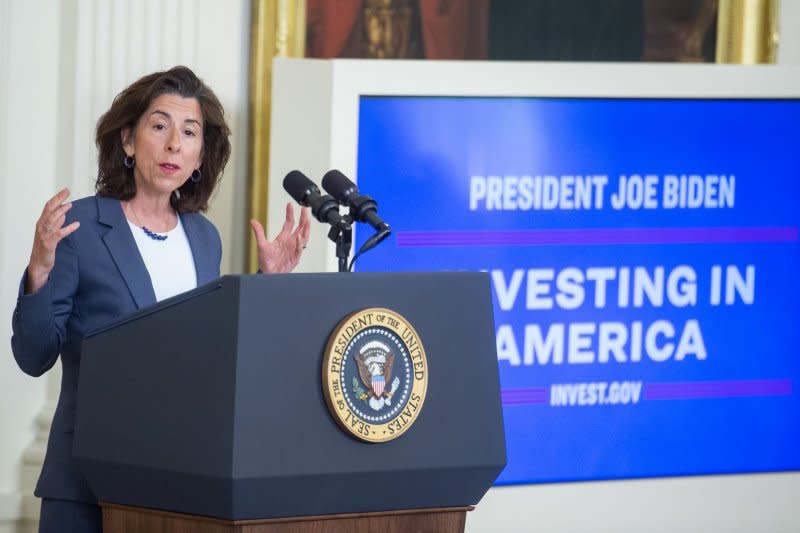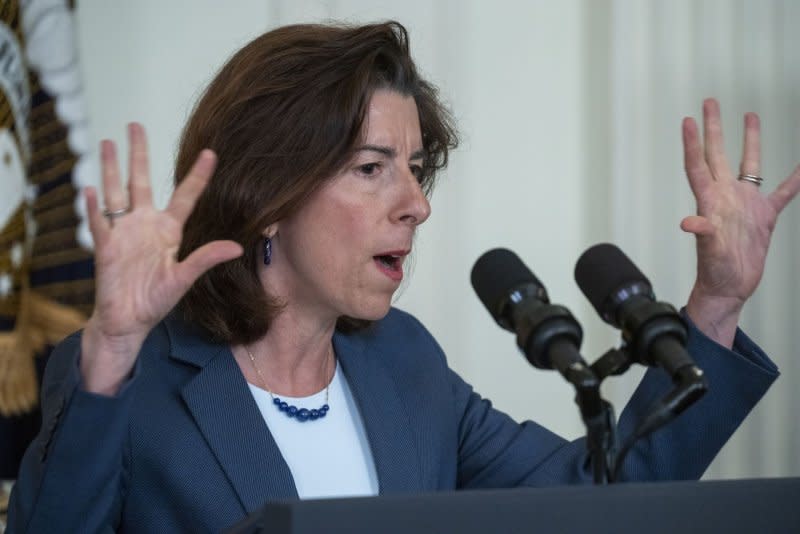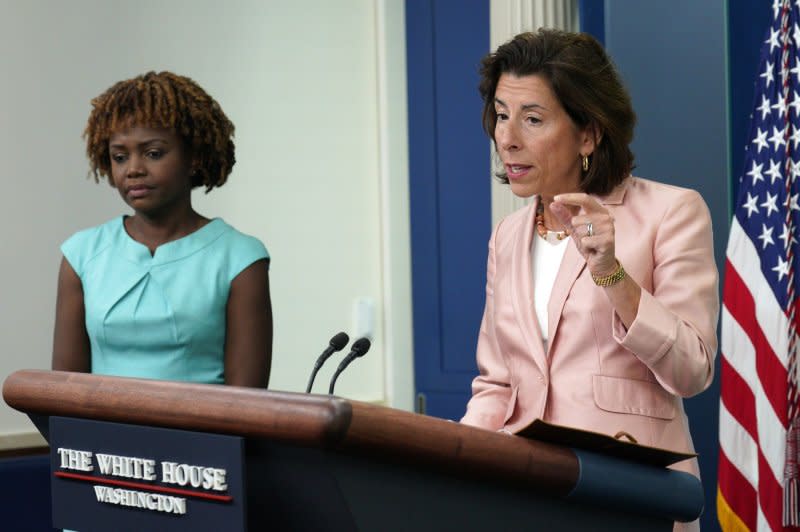New working group of 6 U.S. universities aims to improve forecasting weather

- Oops!Something went wrong.Please try again later.
May 21 (UPI) -- The federal Commerce Department and the National Oceanic and Atmospheric Administration on Tuesday unveiled $6.6 million in funding and plans to form a new working group of American universities with a shared goal of improving weather forecasting amid visible indicators of global climate change.
"The U.S. is experiencing nearly six times more major weather and climate disasters per year than it did forty years ago," Commerce Secretary Gina Raimondo said in a news statement, adding that the Biden administration "is committed to ensuring we have the most accurate data possible to mitigate the impact of these disasters and fight climate change."
Paid for by the Inflation Reduction Act, the $6.6 million will be dolled out to six higher learning institutions that will collectively work as the "Consortium for Advanced Data Assimilation Research and Education," or CADRE, to improve weather forecasts using enhanced numerical weather prediction systems.
Raimondo says that money will go toward the upgrade and improvement of NOAA technology for numerical weather prediction capabilities "to ensure accurate and timely information is available to the public and public safety officials in the face of extreme weather and climate events -- making our communities more climate resilient," the commerce secretary added.
The CADRE will be led by Pennsylvania State University in State College, the University of Oklahoma in Norman, Colorado State University in Fort Collins, Howard University in Washington, University of Maryland in College Park and the University of Utah in Salt Lake City.

"The University of Oklahoma will lead a new multi-university Data Assimilation Consortium to improve weather forecasts using enhanced numerical weather prediction systems, recommended as part of President Biden's Investing in America agenda," the Norman, Okla-based university put on X early Tuesday morning.
In January, NASA and the NOAA reported that the globe's average temperature on land and the oceans' surface set a world record in 2023. By April, the federal weather forecasting agency had tapped into $2.7 million in funding to deploy a new data-gathering device that will improve measurements of ocean temperatures and climate change.

Data assimilation advancements, however, are key to improving the accuracy of NOAA's operational weather forecasts, according to a Commerce Department official.
"There is a huge shortage of people with knowledge of data assimilation, and this shortage is only expected to grow," said Colorado State Professor Peter Jan van Leeuwen, who will be leading the university's contribution to the consortium. He added how the Colorado project will train 26 new people in this particular field "where NOAA alone could easily absorb 100 or more scientists at this moment," he said in a university news release.
The NOAA said despite the fact how weather forecasting accuracy has "vastly improved in the last several decades," computer models used to create them need upgraded given new technological developments, such as artificial intelligence.
But according to the University of Oklahoma, next-generational data assimilation "faces significant challenges associated with high-resolution, multiscale, coupled earth system modeling and a large amount of diverse and complex observations."
"CADRE will also fill serious gaps in the data assimilation workforce through increasing the number of graduate students and postdocs formally trained in data assimilation," said Xuguang Wang, the consortium's new director.
"And through enhancing the national and international data assimilation workforce pipeline," said Wang, Robert Lowry Chair Professor and Presidential Research Professor in OU's School of Meteorology.
Federal investments in things such as the consortium through the Inflation Reduction Act, "are making way for a more weather and climate resilient nation and will enhance the national economy," Michael Morgan, Assistant Secretary of Commerce for Environmental Observation and Prediction, said.

